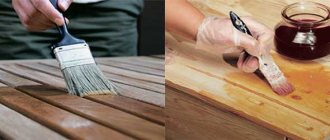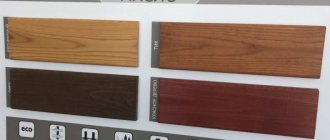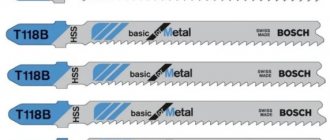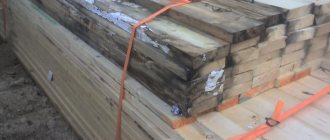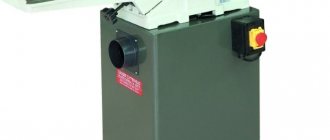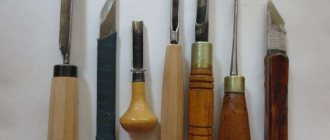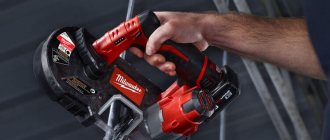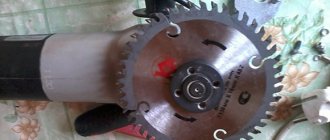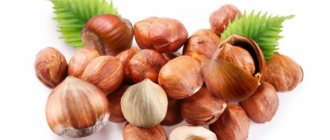For the most part, ordinary people understand an antiseptic as a paint and varnish material that is used to cover wood for protection purposes. But this is a little different. In fact, wood antiseptic is a special type of impregnating primer that impregnates the wood with a special composition and gives it additional protective parameters. Such impregnation is designed to create protection against fungus and mold, blue stains, and also counteract wood-boring beetles. And the deeper such impregnation penetrates into the structure of the tree, the more effective the protection will be. There are two main types of substances used in today's antiseptic preparations:
- Oxidizing agents that destroy mushroom fiber;
- Fungicides used as inorganic/organic compounds (copper, heavy metal salts, phenol derivatives).
Fungicides, unlike oxidizing agents, block fungal enzymes and prevent them from feeding. It is worth mentioning that all antiseptics have a liquid or viscous consistency. This is necessary so that the resin penetrates the wood structure as tightly as possible.
Antiseptic base: water, acrylic, organic
All today's antiseptics are divided into three groups:
- Water-soluble (water-based);
- Oily (based on impregnating oil);
- Organic-soluble (based on organic solvents).
The water-soluble group includes silicon and sodium fluoride, copper pentachlorophenol and ammonium, etc. The oily group consists of creosote, coal and anthracene antiseptics, as well as shale oil.
In turn, according to the type of impact they can be divided into:
- Non-washable;
- Hard to wash out;
- Easily washable.
The first includes only oily substances and those made from organic solvents. The remaining groups for this qualification are represented exclusively by water-soluble compounds.
In order to achieve the required effect for penetration into the wood structure, manufacturers mix an alkyd, silicone or acrylic base into antiseptic solutions.
Solvent-based antiseptics create a waterproof and elastic film, but capable of allowing steam to pass through, while it has excellent protective properties. Such antiseptic compositions are perfect for wooden surfaces that are under constant mechanical stress (terrace flooring, stairs, railings). In addition, after treatment with such a solution, you can apply a wear-resistant water varnish on top.
Water-based antiseptics are the same acrylic-based products, odorless and do not require a solvent. They can be called universal, because they are fire and explosion-proof, can fit perfectly on wet wood and have excellent protective properties.
IMPORTANT! However, their final color can only be known after complete drying, so most designers prefer not to use them, since it is impossible to predict the final color result.
Silicone samples are considered the next generation of drugs and combine the best advantages of the above options. They are made from silicon, and not only is it slightly flammable, but it also does not emit caustic combustion products when exposed to an open flame. Also, silicone is not subject to decomposition over time and is itself biologically neutral. This shows that it can be used for both internal and external processing. Among other things, it has high water-repellent properties, but at the same time allows the wood to “breathe”. It is also elastic and capable of stretching/compressing along with the wood base without cracking. The degree of its penetration into the wood structure is extremely deep, which allows you to protect the material from the inside. It dries quickly (about 2 hours) due to its increased vapor permeability. And its overall service life is twice as long as that of alkyd or acrylic competitors.
“Spraying” and “immersion” as processing methods
Antiseptic solutions can also be divided according to the type of application. For example, most often they use either a surface method (you will need a brush and a spray gun) or a deep method (the treated wood is immersed in a cold/hot solution). In this case, much will depend on the species being processed and its part. For example: sound and mature coniferous wood is extremely poorly impregnated with compounds at room temperature. But as soon as it is heated to 95-100 degrees Celsius, the substance will begin to penetrate deeper inside.
Still, it is preferable to impregnate dry wood with aqueous or organic solutions, however, some of them will disperse inside the tree with great difficulty. At the same time, they can blur and fall on the surface in the form of a salt deposit. At the same time, if the tree is stored wet, then water-soluble substances will come in handy. In a similar way, you can easily impregnate the sapwood of beech, birch or pine.
Dufa Wood Protect
A well-known manufacturer from Germany has created the best antiseptic for valuable wood. It not only effectively resists biological infections, moisture penetration and fire, but has the ability to repel small dust particles that actively contaminate wood on the surfaces of buildings. It can be used to cover wooden elements of landscape design, facade elements of houses and doors made of noble wood.
The solution is almost odorless, dries quickly, is economical when applied with a brush and emphasizes the beautiful texture of the natural material. Among the negative qualities, the need to cover at least 2 times was mentioned.
Selection of antiseptics for specific purposes
All today's antiseptics are strictly divided into two groups - for exterior finishing and for interior use. No protective solution intended for exterior use can be used indoors. This is due to the fact that external formulations often contain toxic substances that, when released into the atmosphere outdoors, may not be so noticeable, but indoors can be harmful to human health if inhaled.
And vice versa - internal impregnation is not suitable for external coating. The thing is that inside the treated surfaces are in more greenhouse conditions, and outside they are subject to many negative influences - from the vagaries of the weather to mechanical influences. Therefore, having protected external structures with a “greenhouse” internal solution, you should not count on its long-term wear resistance.
Compositions for impregnation of rafters
Rafters are used in such a structural element of a structure as a roof. In fact, this part is neither an internal nor an external element. However, in order to choose the ideal protective coating for it, you need to take into account the climatic conditions of the area where the structure is located. For example, in a humid climate, wooden rafters will suffer more from fungus, and in a dry climate, from wood-boring beetles. The type of antiseptic must be selected accordingly.
IMPORTANT! It is better to treat all rafters with the necessary composition before installing them. At the same time, it is prohibited to treat the same rafters with two different compounds at the same time - the compounds may react with each other!
It is worth noting separately that there are also solutions for temporary protection on sale, which are ideally suited for impregnating rafters. They do not tint the wood itself, but they do not penetrate too deeply into its structure and do not create a protective film. As a rule, such solutions are used in relation to lumber for the purposes of their transportation, drying or storage. The standard validity period of this impregnation is six months.
Protection against fungus of boards and beams
Today's protective compounds are good not only as a therapeutic material, but can also be used as a prophylactic agent. They are vital in cases where there is a real threat, in which in a damp room the fungus almost instantly spreads over wooden structures and workpieces. However, before starting impregnation, it is necessary to study in detail the possible biological damage to the wood. Thus, dendrologists advise every 5 years to take a sample of wood that is going to be subjected to preventive impregnation - this way you can find out in advance what type of fungus you will suddenly have to fight (or its mutated strains).
The thing is that fungal microorganisms, over time, adapt to the negative effects of the antiseptic drug on themselves and become able to overcome its effects. Therefore, it makes no sense to constantly use the same solution. A more rational solution would be to use a new type of biocide each time so that the fungus does not have time to adapt to it.
If the tree is already infected, it is necessary to apply those compounds that will cause a chemical burn to the fungus.
IMPORTANT! It is worth remembering that most of these antiseptics are themselves strong oxidizing agents and can cause corrosion of metal structural elements (nails, screws, staples).
Among other things, you should pay attention to the color of the wood: the affected wood is painted the color of the wood-decaying fungus. This part should first be bleached, and only then a protective coating should be applied. Bleaching is also useful in that it reveals rot that is masked by fungus. At the end of bleaching, the wood must be rinsed with water.
Extreme Climate
In the ranking of wood antiseptics, this drug is considered the most universal. It has a depth of penetration and creates a protective film that does not prevent air penetration, but reliably protects against biological destruction, mold and blue stains, as well as from exposure to the sun.
It has self-leveling ability, regardless of the application method.
If you need to buy a wood preservative, you should pay attention to what types of work it is intended for. Modern preparations for interior work are produced without environmentally harmful solvents and are safe for human health. The review presents several protective products that have earned positive reviews.
Interior treatment
First of all, solutions that contain a small proportion of toxic substances or are absent altogether should be selected for interior spaces. The main thing is that they do not emit pungent and pungent odors. This rule especially applies to rooms where children or people prone to acute allergic reactions are constantly present. Thus, for interior decoration it is better to use acrylic or silicone compounds; alkyd ones are less preferable. But oil-based ones are strictly contraindicated - they have an extremely pungent odor that does not dissipate for a long time.
Separately, it is worth mentioning safe antiseptics for saunas and bathhouses. In such structures, wood material is exposed not only to high temperatures, but also to high humidity. Accordingly, in relation to such conditions, the use of conventional protective drugs will be ineffective. For these conditions, special compounds are used that have antimicrobial properties, resist high temperatures and repel water well. Moreover, their penetration into the structure of the tree is at a very high level. The manufacturer directly indicates all of the above-mentioned properties of the antiseptic in the instructions.
Processing of external structures
The durability of wooden products located outdoors depends on a number of factors, the most important of which is the location of the structure and its orientation relative to the cardinal points. For example, a protective composition applied to the north side will last longer than on the south side, because it will deteriorate faster under the influence of UV rays (sun). For a potential owner of the structure, this means that wooden structures on the south side will have to be processed more often than on the north. It can also be mentioned that there are separate groups of drugs:
- For finishing structures exposed to aggressive atmospheric environments (frequent precipitation);
- For finishing structures located in areas of frequent temperature changes (deserts and semi-deserts, where it is hot during the day and cold at night);
- For finishing worn and previously painted wooden structures located in the open air.
It is clear that impregnation of wood installed outdoors is not a matter of one day, so two or three successive stages of applying a protective composition will be required.
Fire retardant solutions – flame retardants
Due to the fact that wood is a material that is easily flammable, it requires additional fire-retardant treatment. With the help of such impregnation, the wood’s resistance to open fire will be increased. Such compositions can be produced in powder, liquid or paste forms:
- Impregnations will prevent fire by penetrating deep into the wooden material and preventing the burning and spread of flames;
- Liquid varnishes form a film on the surface that will prevent rapid heating and subsequent combustion;
- Enamels and paints simultaneously perform two functions - decorative and protective;
- Paste coatings are intended only to protect external surfaces from fire, thanks to their application in a fairly thick layer and by hand;
- Powdered forms are applied using a spray gun by spraying.
IMPORTANT! Even among fire retardants, there is a division according to the direction of application: internal ones are more environmentally friendly, and external ones are able to strongly counteract atmospheric phenomena.
Based on their operating principle, they can be divided into:
- Active - when heated, they emit non-flammable gases and thereby limit the access of oxygen to the combustion site, which reduces the risk of fire spread;
- Passive - they create a layer on the surface of the wood that protects it from the effects of flames. They can also melt at extremely high temperatures, forming a non-combustible “crust”, which will consume a fair amount of thermal energy and will significantly increase the thermal resistance of the entire wooden structure.
Belinka Lasur
This paint and varnish product is produced in Slovenia and goes on sale in 17 different shades that highlight the natural structure of the wood and perfectly protect surfaces from pollution and pests.
Note!
Three-way valve in a heating system: instructions on how to choose and install correctly in a private home
How to seal a stove so it doesn’t crack from the heat, what solution: review of the most effective methods + instructions
Why the bottom of the battery is cold and the top is hot - let's look at the reasons. Review of recommendations on what to do and how to fix it
UV protection
Structures built from wood will certainly lose their original presentable appearance over time due to the fact that they are constantly exposed to damaging ultraviolet (sun) rays. To prevent such situations, it is necessary to promptly carry out appropriate treatment of structures with special compounds intended for these purposes. As a rule, they have special additives and pigments in their structure that significantly reduce the destructive ultraviolet effect.
Practice shows that applying such a product to wood will protect it from the harmful effects of ultraviolet radiation for 8 to 10 years. At the end of this period, the impregnation will need to be renewed. If the protective solution is colorless, it must be renewed every three to four years.
Veres Classic Lazura
The population of Russia is returning to the traditional construction of bathhouses on their plots. A real Russian bathhouse is a wooden structure that requires both external and internal treatment with antiseptics. Veres Classic Lazura is one of the best means for internal protection of a bathhouse from constant exposure to humidity and temperature changes. It can be used to treat floors, ceilings, walls and shelves, which will be protected by this composition for 8 years.
Rating of the best wood preservatives for 2022
For interior work
3rd place: Extra Aquatex with wax
The product belongs to the category of non-washable. Although it is intended for interior finishing work, it is also suitable for exterior processing, but only in areas with a temperate climate. After application, the wood is given a decorative semi-gloss finish. Can be applied to both new and old surfaces.
| Name | Index |
| Type of composition | Alkyd |
| Packaging, kg/liters | 10 |
| Manufacturer country | Russia |
| Price, rubles | 3800 |
Extra Aquatex with wax
Advantages:
- Additional protection against UV rays;
- Strengthens wood;
- Prevents the appearance of blue discoloration.
Flaws:
- Long drying process (at least a day).
2nd place: Tikkurila Supi
The sample is characterized by durable antiseptic protection of wood material. During application it forms a stable acrylate layer. If necessary, the solution can be tinted, and in the colorless version, wood structures will retain their natural appearance for a long time.
| Name | Index |
| Type of composition | Acrylic |
| Packaging, kg/liters | 9 |
| Manufacturer country | Finland |
| Price, rubles | 3500 |
Tikkurila Supi
Advantages:
- Resistant to dirt and dust;
- Economical consumption;
- Fast drying period.
Flaws:
- Not found.
1st place: Veres Classic Lazura
Upon completion of application, the wooden surface will have a presentable appearance with a silky matte shine. It supports temperature changes well, so it is suitable for use in bathhouses and saunas. Using special ingredients, the standard service life of the coating has been increased from 5 to 8 years.
| Name | Index |
| Type of composition | Glaze impregnation |
| Packaging, kg/liters | 1 |
| Manufacturer country | Serbia |
| Price, rubles | 500 |
Veres Classic Lazura
Advantages:
- Does not require dilution;
- Increased service life;
- Low risk of counterfeiting.
Flaws:
- It takes a long time to dry (about 15 hours).
For outdoor use
3rd place: Prosept Extreme Climate
A multi-tasking product intended for use in difficult climatic conditions. It protects wood not only from sunlight, but also from the harmful effects of parasitic insects (for example, it prevents wasps from creating nests). After application, a thin layer is formed on the surface, which allows the wood to “breathe”.
| Name | Index |
| Type of composition | Water soluble |
| Packaging, kg/liters | 9 |
| Manufacturer country | Germany |
| Price, rubles | 5200 |
Prosept Extreme Climate
Advantages:
- There are no restrictions on wood species;
- Fast absorption;
- There is no smell.
Flaws:
- High price.
2nd place: Nortex-Disinfector
This drug has excellent price/quality ratios. Its distinctive property is its ability to work on wet wood. The composition is environmentally friendly and it is allowed to work with it without a respirator. Apply using a brush or roller. Very affordable price.
| Name | Index |
| Type of composition | Water soluble |
| Packaging, kg/liters | 1 |
| Manufacturer country | Russia |
| Price, rubles | 350 |
Nortex-Disinfector
Advantages:
- Ecological ingredients;
- Does not affect the color and structure of the wood;
- Effectively prevents cracking.
Flaws:
- Increased consumption for wet wood.
1st place: Pinotex Natural
A very high quality product, absolutely unaffected by negative atmospheric factors. Characterized by high frost resistance. The impregnation itself is transparent, the structure contains ingredients of the AVB formula. It is easy to apply and forms an excellent, breathable, vapor-permeable film.
| Name | Index |
| Type of composition | Acrylic |
| Packaging, kg/liters | 1 |
| Manufacturer country | Estonia |
| Price, rubles | 500 |
Pinotex Natural
Advantages:
- Suitable for wood of any processing (sawn, planed, etc.);
- Innovative technologies are used;
- Economical cost.
Flaws:
- Not detected.
Fire retardants (fire retardant)
3rd place: Neomid 450
After treatment with this product, the wood becomes difficult to ignite. The one-time protection period is 7 years. At the same time, the product contains ingredients responsible for bioprotection - against fungus, mold and insects. Does not require breeding. There are no restrictions on the method of application.
| Name | Index |
| Type of composition | Fire retardant liquid |
| Packaging, kg/liters | 10 |
| Manufacturer country | Russia |
| Price, rubles | 1400 |
Neomid 450
Advantages:
- Additional painting is possible;
- Suitable for all elements of the structure;
- Multifunctionality.
Flaws:
- Acrid toxic odor (but dissipates over time).
2nd place: Senezh Ognebio Prof
Makes surfaces more resistant to open flames, while at the same time can counteract high humidity. Weakly susceptible to temperature changes. The mineral composition itself is quickly absorbed and has an extended bioprotection period - 20 years! It can be processed either by application or by immersion.
| Name | Index |
| Type of composition | Mineral |
| Packaging, kg/liters | 5 |
| Manufacturer country | Russia |
| Price, rubles | 650 |
Senezh Ognebio Prof
Advantages:
- Variability of working methods;
- Preservation of the original color of the material;
- Extended protection period.
Flaws:
- High consumption per square meter.
1st place: Pirilax-Lux
The structure of this sample does not contain fluorides and methyl impurities, which allows it to be used in children's rooms and hospitals. To improve efficiency, the manufacturer suggests applying it in several layers. The operating temperature does not matter - application can be done even at -16 Celsius. The consistency of the product is viscous and does not require dilution.
| Name | Index |
| Type of composition | Fire retardant coating |
| Packaging, kg/liters | 10 |
| Manufacturer country | Russia |
| Price, rubles | 4650 |
Pirilax-Lux
Advantages:
- Wide temperature range;
- Ease of use;
- Contains no toxic substances.
Flaws:
- The material may darken after 2-3 years.
Wood bleaches Neomid-500 and Sagus Profi
Over time, the wood often begins to darken: first, blue spots appear, then large black stains, on which mold actively multiplies. Bleach will help cope with this problem.
The best of them are Neomid-500 and Sagus Profi
NEOMID 500 is a bleaching and cleaning agent that destroys fungi, plaque and restores the natural color of wood. The product is produced by the Russian company EXPERTECOLOGY-NEOHIM. The product meets international chemical production standards.
Neomid-500 is used for preventive purposes or to lighten wood that has signs of fungal damage. It is applied not only to the darkened area, but to the entire surface to completely destroy the spores.
If the log is already affected, a concentrate and a substance diluted with water 1:1 will do. You can update the color with a 1:2 solution. The substance is applied in a thin, uniform layer. You must follow safety requirements: wear goggles and gloves. Contact of the substance with skin is unacceptable. After impregnation, the wood dries within 24 hours. The room must be ventilated. Permissible temperature – up to 20 °C.
Advantages of Neomid-500 bleach:
- the product returns the wood to its natural color 12 hours after use;
- a single preventive treatment protects the building from harmful microorganisms for 20 years;
- low consumption: approximately 150 g/m2.
YouTube video about Neomid-500:
Sagus Profi – bleach for wooden log houses
It acts in a similar way: it lightens the wood and removes the effects of moisture, mold and bioorganisms. It is acceptable to use it for processing concrete, tiles, stone and other materials that have been subjected to biodestruction. Sagus Profi has a chlorine base and a slight chlorine smell. In appearance it is a transparent liquid with a slight yellowish tint. It does not need to be diluted or washed off. Sagus is applied to a dry, unpainted surface. It is recommended to use a brush with hard synthetic bristles as a tool. Sometimes a repeat procedure is necessary. Consumption – 110-170 g/m2.
Advantages of Sagus Profi bleach:
- it is permissible to use it at negative temperatures;
- quick drying (the drying speed is affected by temperature and air humidity: at +20°C the product will dry in 2 hours);
- This is one of the few bleaches that can be used outdoors in winter.
Both bleaches are effective. Neomid-500 is more delicate and is suitable for the prevention and “refreshing” of wood. Sagus Pro is more intense, it will remove deep lesions faster.
Video on YouTube about Sagus Profi wood bleach with reviews and expert recommendations:
Expert woodworker: Kuznetsov Sergey Petrovich
Instead of an epilogue
The analysis showed that domestic consumers are more inclined to choose Western samples for antiseptic work. This is due to their extreme quality and greater versatility and multifunctionality. Usually, solutions are purchased in specialized stores - this reduces the likelihood of buying a counterfeit. It is worth noting that ordering online from a manufacturing company (especially if it is located abroad) may well turn out to be more expensive than the retail price.
